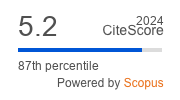Article | Open Access
Designing Democratic Constitutions: The Search for Optimality
| Views: | 3255 | | | Downloads: | 1828 |
Abstract: This article analyses salient trade-offs in the design of democracy. It grounds this analysis in a distinction between two basic models of democracy: simple and complex majoritarianism. These models differ not only in their electoral and party systems, but also in the style of coalition-building. Simple majoritarianism concentrates executive power in a single majority party; complex majoritarianism envisions the formation of shifting, issue-specific coalitions among multiple parties whose programs differ across multiple conflict dimensions. The latter pattern of coalition formation is very difficult to create and sustain under pure parliamentary government. A separation of powers between executive and legislature can facilitate such a pattern, while also achieving central goals of simple majoritarianism: identifiable cabinet alternatives before the election and stable cabinets afterward. The separation of powers can thus balance simple and complex majoritarianism in ways that are unavailable under parliamentarism. The article also compares the presidential and semi-parliamentary versions of the separation of powers. It argues that the latter has important advantages, e.g., when it comes to resolving inter-branch deadlock, as it avoids the concentration of executive power in a single human being.
Keywords: electoral systems; parliamentary government; presidential government; semi-parliamentary government
Published:
Issue:
Vol 7, No 4 (2019): Trade-Offs in the Political Realm: How Important Are Trade-Offs in Politics?
© Steffen Ganghof. This is an open access article distributed under the terms of the Creative Commons Attribution 4.0 license (http://creativecommons.org/licenses/by/4.0), which permits any use, distribution, and reproduction of the work without further permission provided the original author(s) and source are credited.


